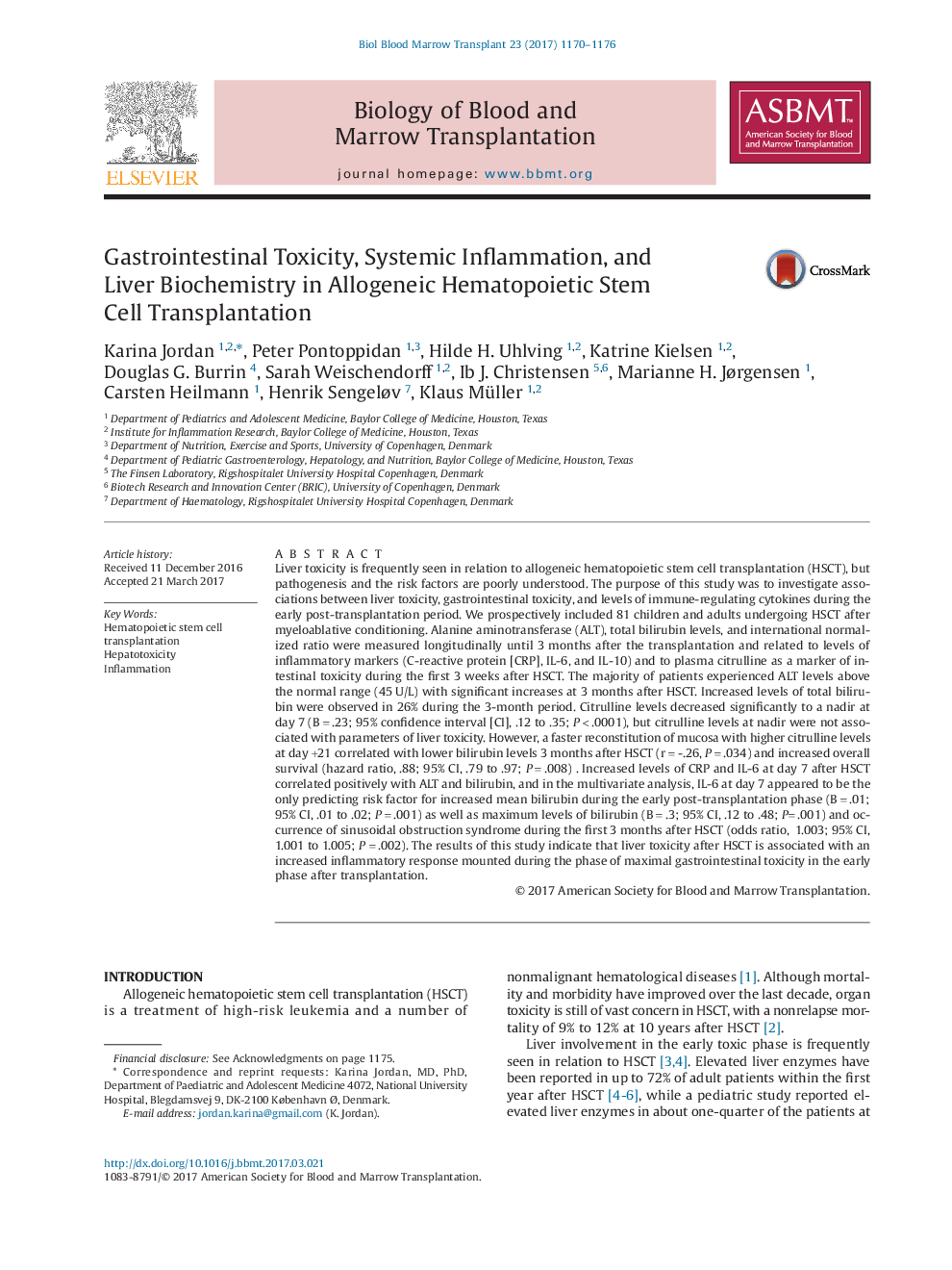| Article ID | Journal | Published Year | Pages | File Type |
|---|---|---|---|---|
| 5524355 | Biology of Blood and Marrow Transplantation | 2017 | 7 Pages |
â¢Interleukin 6 on day +7 was associated with elevated bilirubin levels 1 month after hematopoietic stem cell transplantationâ¢Higher citrulline levels on day +21 after hematopoietic stem cell transplantation correlated with lower bilirubin levels 3 months after hematopoietic stem cell transplantationâ¢Interleukin 6 on day +7 after hematopoietic stem cell transplantation was associated with the occurrence of sinusoidal obstruction syndromeâ¢Liver toxicity is associated with an increased inflammatory response mounted during the phase of maximal gastrointestinal toxicity in the early post-hematopoietic stem cell transplantation phase
Liver toxicity is frequently seen in relation to allogeneic hematopoietic stem cell transplantation (HSCT), but pathogenesis and the risk factors are poorly understood. The purpose of this study was to investigate associations between liver toxicity, gastrointestinal toxicity, and levels of immune-regulating cytokines during the early post-transplantation period. We prospectively included 81 children and adults undergoing HSCT after myeloablative conditioning. Alanine aminotransferase (ALT), total bilirubin levels, and international normalized ratio were measured longitudinally until 3 months after the transplantation and related to levels of inflammatory markers (C-reactive protein [CRP], IL-6, and IL-10) and to plasma citrulline as a marker of intestinal toxicity during the first 3 weeks after HSCT. The majority of patients experienced ALT levels above the normal range (45âU/L) with significant increases at 3 months after HSCT. Increased levels of total bilirubin were observed in 26% during the 3-month period. Citrulline levels decreased significantly to a nadir at day 7 (Bâ=â.23; 95% confidence interval [CI], .12 to .35; Pâ<â.0001), but citrulline levels at nadir were not associated with parameters of liver toxicity. However, a faster reconstitution of mucosa with higher citrulline levels at day +21 correlated with lower bilirubin levels 3 months after HSCT (r = -.26, Pâ=â.034) and increased overall survival (hazard ratio,â.88; 95% CI, .79 to .97; Pâ=â.008) . Increased levels of CRP and IL-6 at day 7 after HSCT correlated positively with ALT and bilirubin, and in the multivariate analysis, IL-6 at day 7 appeared to be the only predicting risk factor for increased mean bilirubin during the early post-transplantation phase (Bâ=â.01; 95% CI, .01 to .02; Pâ=â.001) as well as maximum levels of bilirubin (Bâ=â.3; 95% CI, .12 to .48; P=â.001) and occurrence of sinusoidal obstruction syndrome during the first 3 months after HSCT (odds ratio, â1.003; 95% CI, 1.001 to 1.005; P =â.002). The results of this study indicate that liver toxicity after HSCT is associated with an increased inflammatory response mounted during the phase of maximal gastrointestinal toxicity in the early phase after transplantation.
